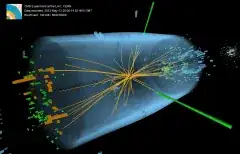How did the Hatley-Hawking wavefunction of the whole universe, as defined on the minisuperspace of all possible homogeneous and isotropic three geometries and matter fields, experience a collapse, giving rise to the classical universe we observe?
Specifically, if you take the whole universe as the system, then by definition there can be no outside 'observer' who can interact with the system and lead to it's collapse. Does this mean we should switch to the concept of spontaneous collapse(collapse without an 'observer'), e.g. GRW or CSL collapse models?
If we agree that a quantum system can spontaneously collapse, we still have a problem. The known formulation of quantum mechanics(even the spontaneous collpase models) assumes a preexisting classical spacetime; for instance in the spontaneous collapse models the position space wavefunction of a quantum system collapses at a particular point in 'space' at a random moment in 'time'. Then again, classical spacetime itself is encapsulated in what we call the classical 'universe'. If we agree that the wavefunction of the universe can spontaneously collapse to our classical observable universe, then exactly 'where' does in collapse into?
